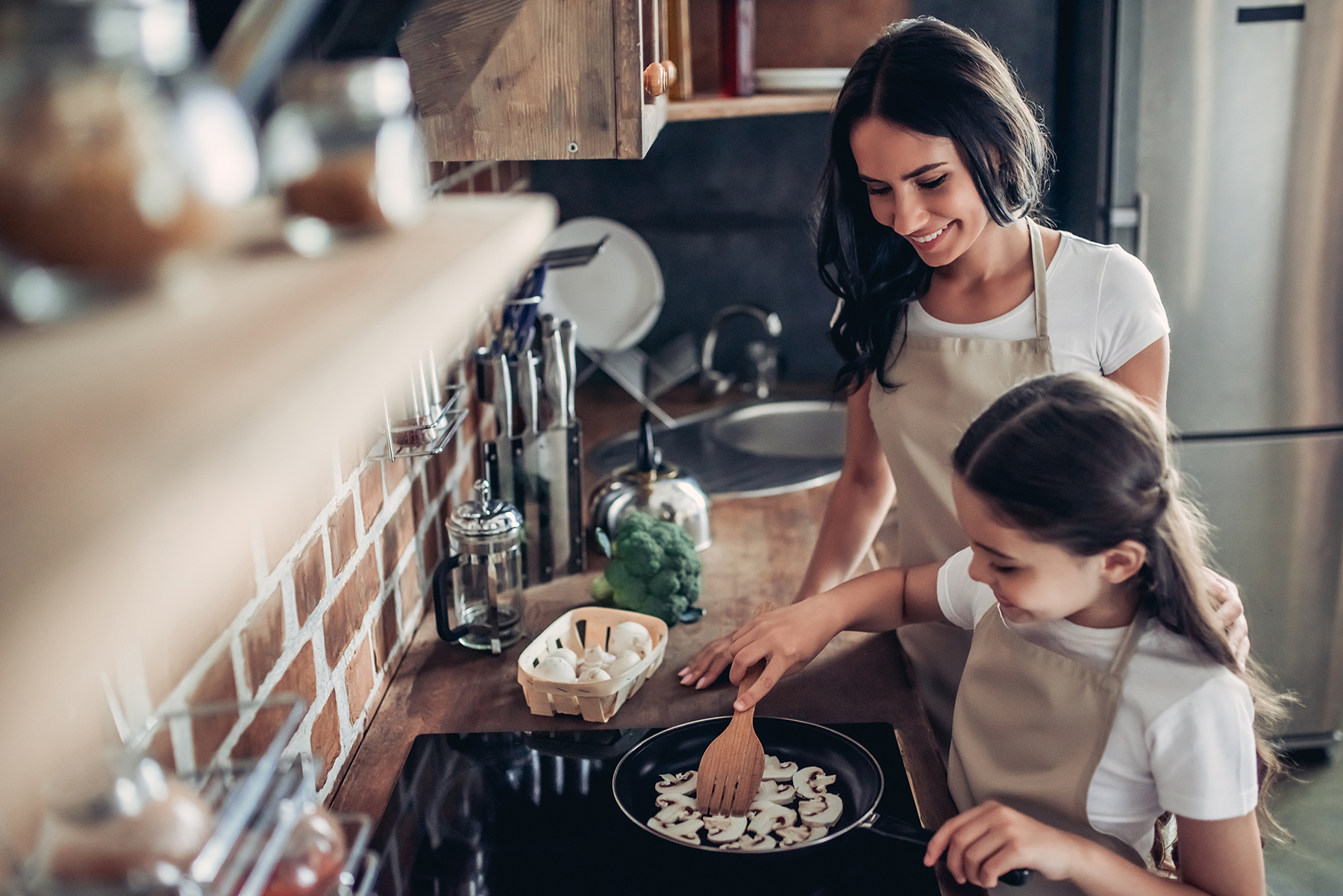by Brandy Abalos
Children can learn a lot in the kitchen, from math skills to leadership abilities. They love to take control of a recipe and even make it their own. Kids can build confidence and learn about success while helping in the kitchen. However, it’s essential to establish rules together to maintain safety for your children in the kitchen.
Cooking can be fun, but there are also a lot of moving parts that can pose a threat to little fingers. Here are a few kitchen safety tips to help you and your loved cook with care:
Keep a close eye on children as they cook.
Children as young as toddlers can help out in the kitchen. However, it’s important to give them age-appropriate tasks and watch them closely. As children get more comfortable in the kitchen, they might be able to complete tasks independently. However, even with teenagers, you should always be within earshot in case they have questions, or something happens.
Get kid-friendly kitchen tools.
One of the highly coveted tasks in the kitchen is cutting and chopping. Children often want to prepare veggies and fruits because the process of washing, peeling, cutting and sorting all of the colorful objects is appealing. However, knife usage can be extremely dangerous. Remove some of the risks by finding plastic knives that will easily slice vegetables and fruits with soft skins but will not damage your child’s fingers. They even make plastic pizza cutters that kitchen assistants of any age can use.
Everyone should wash their hands often.
Germs exist everywhere. The quickest way to do away with them is to wash hands frequently. Hands should be scrubbed with soap under warm water for a minimum of 20 seconds. You can teach small children to sing the ABC song while they wash their hands to remember how long they need to scrub. Washing hands should take place before any food, utensil, or appliance is touched. Hands should also be washed between different types of foods like raw meat and fresh veggies.
Teach your child to clean as they go.
When cooking, kitchens can become messy quickly. Spills that are left for later quickly become a slip and fall hazard. Leaving dirt and grime on the counter can contaminate cooked food or other types of food that will be eaten fresh and clean. You might have a “trash bowl” where you can easily drop peels, wrappers and other trash while you’re moving about the kitchen. When the bowl is filled, it can be dumped into a bag and tossed in your larger trash can.
Remember to use potholders!
When food is fresh off the stove or pops out of the oven, it can be hard to remember to grab a potholder or towel to protect from the heat. Children may want to place the food container on the table or counter quickly. You should make sure you have potholders and towels placed at convenient locations throughout your kitchen to handle hot items. You can also buy colorful potholders and towels just for your children and place them at their level in the kitchen so they will be excited to use them.
Remind your child that it takes practice in the kitchen.
The best cooks have practiced their art for decades. Children should be encouraged to start early but not expected to produce perfection. Remind children that it takes practice to achieve successful results when preparing food to eat. Knife skills, ingredient measurement and reading recipes all take time to perfect. And even then, professionals sometimes create imperfect food.
Communication is key!
You should teach your child to communicate in the kitchen. If they are moving behind you, they should announce where they are going. This prevents you from bumping into one another. Even if you have a large kitchen, more than one person moving around can get confusing. Encourage your child to ask questions and be curious about techniques and skills in the kitchen. They will only learn by asking how and doing new things.
Everything and everyone should have a place.
Establish territories for each person and announce when someone is moving from one place to another. Have specific areas where food should be prepared, mixed, cooked and cooled. Everything should have a place to keep kids safe in the kitchen. Kitchen utensils, pots, pans and other items all have places to be in the kitchen. People should too.
Ask before sampling any food.
One of the biggest incentives for helping in the kitchen is getting to taste test things. Kids love to lick the spoon—and their fingers! However, not every food is safe to lick off the beater. Anything made with raw eggs or that has come into contact with uncooked meat should be heated before your child tries it. Let them know that when it comes out of the oven or off the stove, they can sample it at that point.
Wear appropriate clothes.
An apron is fun to wear in the kitchen, and it can promote safety as well. Although aprons prevent stains from getting on your clothes, they can also be used as a potholder in a pinch. Aprons also hold back baggy clothes that can get caught on kitchen appliances and droop into soups. You shouldn’t wear any clothing that is oversized in the kitchen, or that has baggy sleeves or legs. You should also avoid wearing clothes with glitter, sequins, feathers or other embellishments because they could contaminate your food. The best clothing to wear in a kitchen is a pair of comfortable pants and an old shirt.
Take Cooking Lessons Together as a Family.
Children can learn a lot in the kitchen with their families. However, there are cooking schools that specialize in teaching young ones how to practice this art safely. They often have family cooking classes or age-appropriate cooking classes that you can sign your little ones up for. If your child is really interested in working in the kitchen, keep them involved with routine practice.








Leave A Comment